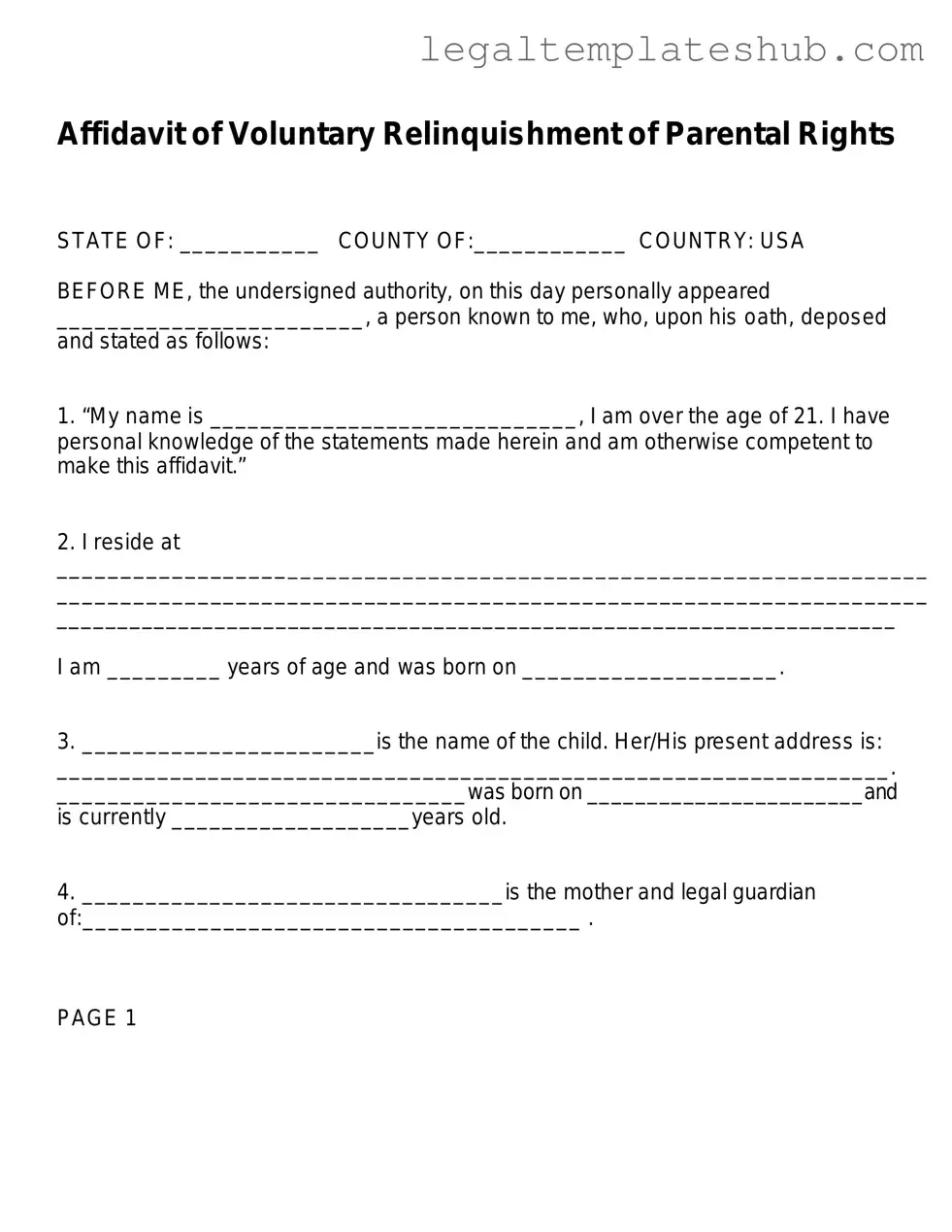Blank Affidavit Parental Rights PDF Form
The Affidavit of Voluntary Relinquishment of Parental Rights is a legal document that allows a parent to formally give up their parental rights to a child. This process involves affirming the decision in front of a notary public, ensuring that the relinquishment is made with full understanding of its implications. For those considering this step, filling out the form accurately is crucial; click the button below to begin.
Access Editor
